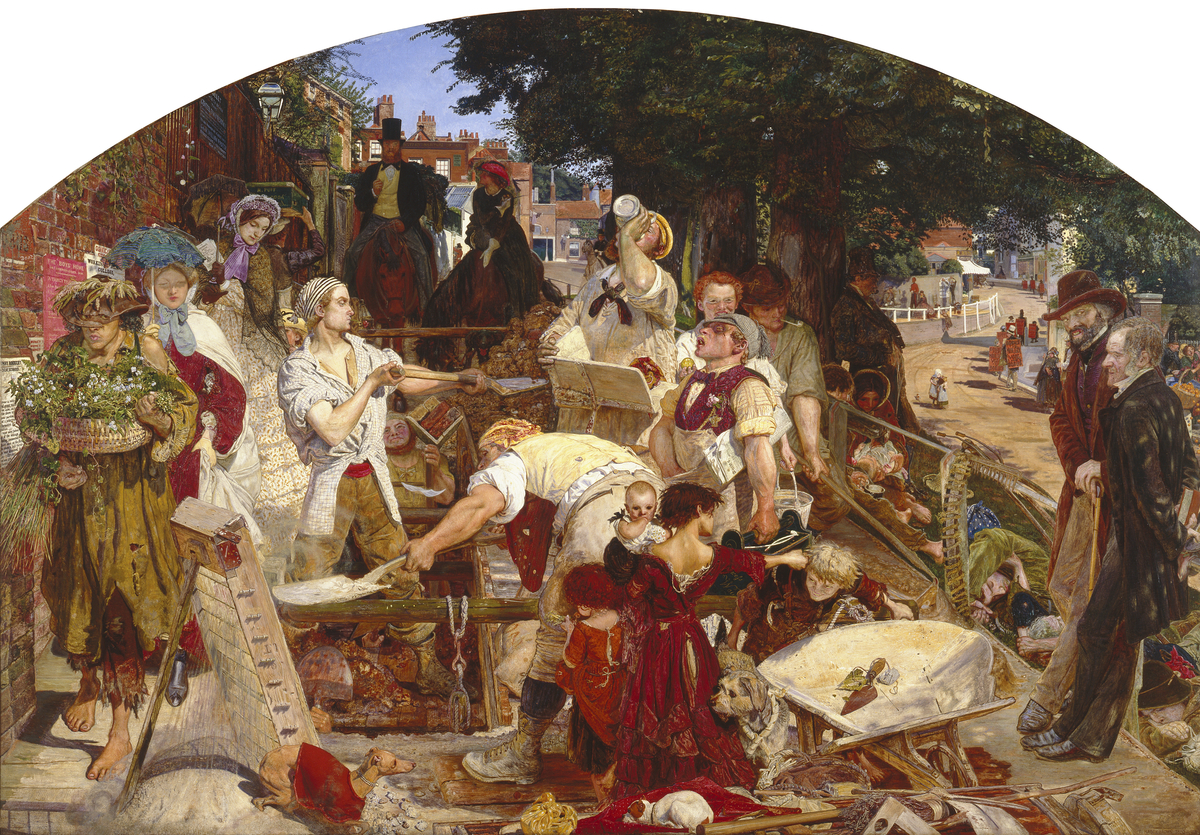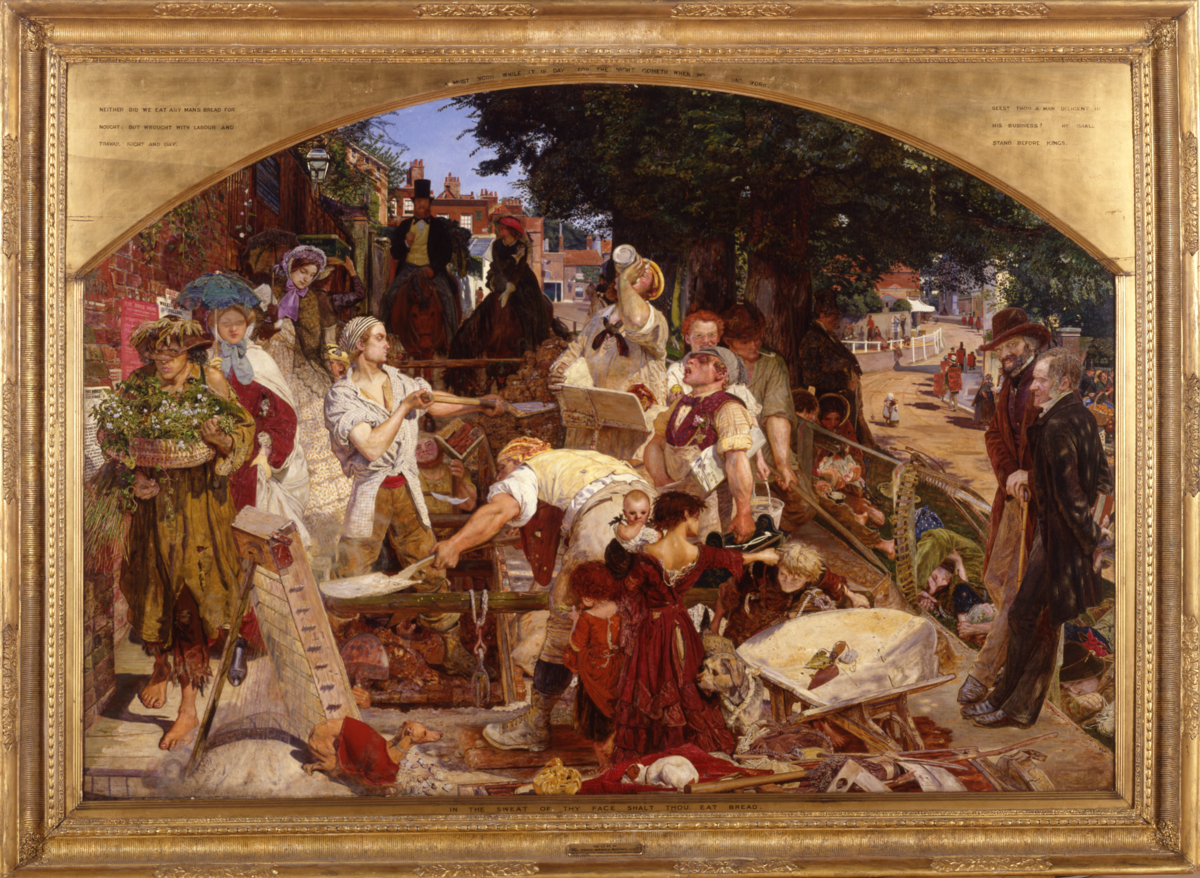Work
Summary
Street scene with arched top, representing aspects of work. In the centre, a group of navvies are digging up the road, one is carrying bricks, another drinking beer, while others shovel the earth dug up by their workmates below into a pile on the surface. In front of them, a young girl with tousled hair and a ragged red, velvet dress looks after three children; a baby in her arms, a small girl at her side, and boy to the right, whose refusal to leave the workmen's wheelbarrow alone has forced the young girl to pull him away by his hair. A mongrel dog at her feet faces a well groomed greyhound, dressed in a red cape, opposite, a third dog lies down between them. To the left, walking to the side of navvies, a ragged flower seller holding a large basket of plants makes his way towards the viewer. He looks suspiciously to the right, his eyes visible through a tear in the brim of his hat. A wealthy lady with blue parasol walks behind him, with an older lady, more soberly dressed, distributing pamphlets behind her. Behind this group a baker, just visible, walks away from the viewer, carrying a tray of pastries on his head. Behind the navvies, a wealthy middle-aged gentleman and his daughter sit on horseback, their path blocked by the roadworks. To the far right, two intellectual men lean against the fence at the side of the road. Behind them a steep grassy bank runs down to a road below. Unemployed workers (haymakers) are sleeping at the top of the bank in the shade of a large tree. A couple feeding a baby sit close to the tree, a man wearing a top hat stands behind them, leaning against the trunk. Along the lower road, running into distance, a group of people wearing sandwich boards walk away from the viewer, advertising for votes. In the top right corner, a woman with a large basket of oranges is apprehended by a policeman, causing her to spill her oranges into the road.
Display Label
Gallery text panel The Pre-Raphaelites in their Time Britain's first and best-known radical art movement emerged from within the Royal Academy in 1848. Its original members were rebellious art students who were disillusioned with contemporary practice. They looked back to Italian art before Raphael, seeing the pre-1500 period as one of great sincerity. They called themselves the Pre-Raphaelite Brotherhood. In an age of rapid industrial and urban expansion, Pre-Raphaelite artists like Rossetti, Hunt and Millais, and pioneering design reformers such as William Morris, sought a return to pre-industrial values of art and design in truth to nature and materials, and good workmanship. In addition, the arts of the Middle Ages and Middle East were important sources of stylistic inspiration. The Bible, literature and contemporary life were preferred over subjects derived from classical mythology. The Brotherhood also rejected contrived studio lighting and took canvases outside to paint directly from nature. Although attempting to convey exactly what they saw, they created a heightened reality of dream-like intensity with minute details and bright, dazzling colours. Their art was a new kind of history painting for a new age.
Object Name
Work
Creators Name
Date Created
1852-1865
Dimensions
unframed: 137cm x 197.3cm
framed: 164cm x 224.5cm
accession number
1885.1
Place of creation
Manchester
Support
canvas
Medium
oil paint
On Display
[G8] Manchester Art Gallery - Gallery 8
View all
Credit
Purchased
Legal
© Manchester Art Gallery


